England. The name itself conjures a thousand images: the silhouette of a medieval castle against a misty sky, the red flash of a double-decker bus on a bustling city street, rolling green hills dotted with sheep, and charming villages built from honey-coloured stone. It is a country small in size but colossal in its historical and cultural footprint. This is the land of Shakespeare, the Beatles, Isaac Newton, and Queen Elizabeth I; a place where ancient Roman walls stand near gleaming modern skyscrapers, and where every winding country lane seems to lead to a pub with a thousand years of stories.
Today we will journey the length and breadth of the country, from the global metropolis of London to the remote Roman frontier of Hadrian’s Wall. We will celebrate the unmissable icons, but our true mission is to venture beyond them, to uncover the lesser-known destinations, the local favorites, and the hidden gems that reveal the authentic, beating heart of England.
A Note on This In-Depth Guide
The story of England’s destinations is too vast and too detailed for a brief overview. To honor the request for a truly comprehensive guide, this article is presented as a multi-part series. Each section will build upon the last, allowing us to give each region the deep dive it deserves. Our journey begins, as so many do, in the nation’s sprawling, exhilarating capital: London.
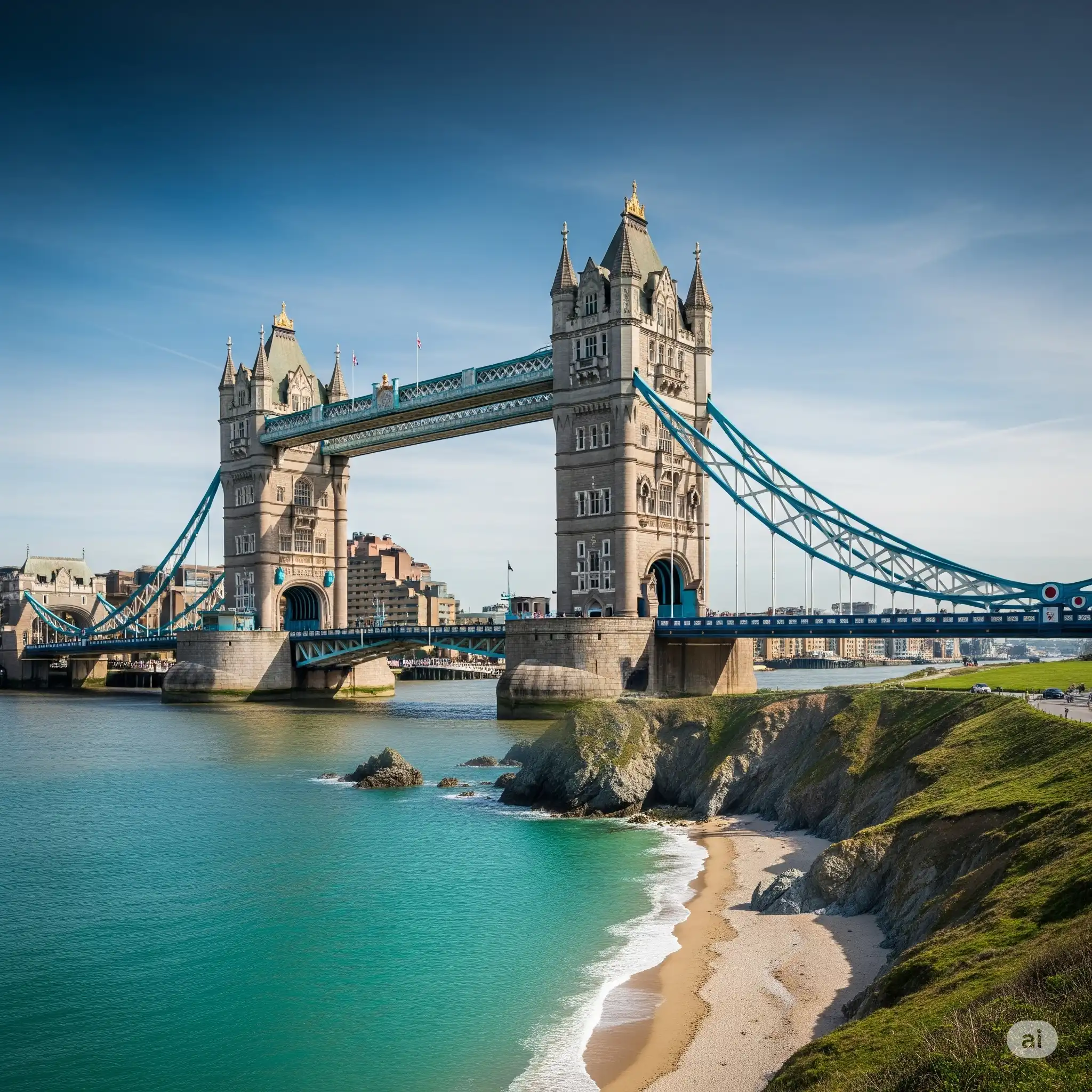
London: The World in One City
London is not just a city; it is a universe. A sprawling, multicultural metropolis where centuries of history live alongside cutting-edge culture, finance, and fashion. It is a city of grand royal parks and cozy neighborhood pubs, of world-class museums and gritty street markets. It can be overwhelming, but with a curated approach, it is endlessly rewarding. We’ll look beyond the basic checklist and explore the city’s layers.
The Unmissable Icons (A Fresh Perspective)
No first-time visitor should miss London’s headline acts, but understanding the stories behind them is what transforms sightseeing into a meaningful experience.
- The Tower of London: Don’t just go to see the Crown Jewels (though they are spectacular). Go to feel the weight of its dark, 900-year history. This was not a palace of comfort but a fortress, a prison, and a place of execution. Stand on Tower Green and imagine Anne Boleyn’s final moments. Hear the stories of the Princes in the Tower from a Yeoman Warder (a “Beefeater”), whose tours blend humor with history. It is the story of England’s power struggles, written in stone and blood.
- Westminster Abbey & the Houses of Parliament: This is the nexus of British power, both spiritual and political. Westminster Abbey is not just a beautiful Gothic church; it is the nation’s coronation church since 1066 and the final resting place of 17 monarchs and some of its greatest citizens, from Isaac Newton to Charles Darwin. Across the street, the iconic silhouette of the Houses of Parliament and the Elizabeth Tower (home of Big Ben) represents a millennium of political history.
- Buckingham Palace: While the palace itself can be toured only at specific times, the real experience is the pomp and ceremony that surrounds it. Witness the Changing of the Guard, a masterpiece of military precision and tradition, or simply stroll through the magnificent St. James’s Park, with its resident pelicans and perfect views of the palace.

Beyond the Center: Discovering London’s Villages
The true magic of London is often found when you venture out of the crowded West End and discover its distinct “villages,” each with its own unique character.
Greenwich: A World of Time and Maritime Majesty
A short boat ride down the Thames from central London, Greenwich feels like a different world. This UNESCO World Heritage site is the home of time itself.
- The Royal Observatory: Stand on the Prime Meridian Line, with one foot in the Eastern Hemisphere and one in the Western. This is Longitude 0°, the point from which all time and distance is measured. The observatory also houses fascinating exhibits on the history of astronomy and timekeeping.
- The View from Greenwich Park: Climb the hill to the observatory for one of the most breathtaking panoramic views of London. The sweeping vista perfectly frames the classical architecture of the Queen’s House and the Old Royal Naval College, with the modern skyscrapers of Canary Wharf rising dramatically in the distance—a perfect visual metaphor for London’s blend of old and new.
- Maritime History: Explore the Cutty Sark, a beautifully preserved 19th-century tea clipper, and delve into Britain’s naval history at the National Maritime Museum.
Richmond-upon-Thames: A Royal Park and Riverside Charm
For a taste of the English countryside without leaving the city, head to Richmond.
- Richmond Park: This is the largest of London’s Royal Parks and a former royal hunting ground. Its greatest treasure is the herd of over 600 Red and Fallow deer that roam freely across its vast grasslands and ancient woodlands. Seeing a majestic stag emerge from the morning mist is a truly unforgettable experience.
- Riverside Life: Stroll along the beautiful stretch of the River Thames, lined with historic pubs, elegant Georgian houses, and rowing clubs. Rent a boat, have a pint at a riverside pub, and watch the world go by at a slower, more civilized pace.
Hampstead: Heath, High-Liers, and Hidden Alleys
Known for its intellectual and artistic residents, Hampstead offers a village feel with some of the best views in London.
- Hampstead Heath: A vast, wild park of meadows, swimming ponds, and ancient woodland that feels miles away from the urban hustle. The view from Parliament Hill is a protected vista, offering a spectacular skyline of the entire city.
- Village Charm: Get lost in the winding, cobbled backstreets like Flask Walk, filled with charming independent shops, historic pubs (like The Holly Bush), and beautiful cottages.

The Museum Mile and More: A Cultural Deep Dive
London is home to some of the greatest museums in the world, and many of the national ones are completely free to enter.
- The Big Three in South Kensington: You could spend days just on this one corner of London.
- The Victoria and Albert Museum (V&A): The world’s leading museum of art, design, and performance. Its collections are staggering, from ancient textiles and Renaissance sculptures to cutting-edge fashion and photography.
- The Natural History Museum: A cathedral of nature, famous for its grand Hintze Hall (home to a massive blue whale skeleton) and its world-class dinosaur exhibits.
- The Science Museum: An interactive and engaging journey through the history of science and technology.
- The British Museum: Home to a collection of world treasures that spans two million years of human history, including the Rosetta Stone, the Parthenon sculptures, and the Egyptian mummies.
- Lesser-Known Masterpieces: For a more intimate experience, seek out London’s smaller gems.
- Sir John Soane’s Museum: The eccentric and wildly atmospheric former home of a 19th-century architect, left untouched as he intended. It’s a labyrinth of art, artifacts, and architectural curiosities packed into every conceivable space.
- The Wallace Collection: A world-class collection of fine and decorative arts housed in a grand historic townhouse, famous for its paintings (including “The Laughing Cavalier”) and its collection of Sèvres porcelain and princely arms and armor.
London is a city that constantly reinvents itself while fiercely guarding its history. It rewards the curious traveler with endless layers of discovery, far beyond the initial awe of its iconic skyline.
Now, our journey leaves the metropolis behind. We travel west into a landscape where the layers of history are older and more profound. This is a land of mystical stone circles, of elegant cities built on ancient Roman foundations, of scholarly ambition housed in medieval colleges, and of storybook villages nestled in rolling green hills. We are heading into the ancient and academic heart of southern England.
The Stones and Spas of the Southwest
Our first foray into the west takes us to the county of Wiltshire, a place dominated by a mysterious prehistoric landscape, and then to the city of Bath, a masterpiece of Roman ingenuity and Georgian elegance.
Stonehenge & Avebury: Echoes of a Lost World
Long before the Romans or even the Celts, the chalk downlands of Wiltshire were a sacred heartland for Neolithic and Bronze Age peoples. Their legacy is a landscape dotted with burial mounds and two of the most magnificent prehistoric stone circles on Earth.
Stonehenge: The Enduring Enigma
The silhouette of Stonehenge is one of the most iconic and instantly recognizable in the world. Rising from the vast, empty expanse of Salisbury Plain, this circle of massive standing stones, meticulously shaped and transported over vast distances some 5,000 years ago, is a testament to the extraordinary determination and engineering prowess of its builders. It is a UNESCO World Heritage site, and its purpose remains one of history’s greatest unsolved mysteries. Was it a temple for sun worship, an astronomical observatory, or a sacred burial ground for a ruling elite?
The modern visitor experience is highly organized, with an excellent visitor centre explaining the theories behind its construction. While you cannot walk directly amongst the stones on a general ticket (a measure to protect the fragile site), the pathway that circles the monument allows for breathtaking views and a profound sense of awe and wonder. Insider’s Tip: Book your timed tickets well in advance, especially for the sunrise or sunset slots, to experience the stones in the most dramatic light.
Avebury: The Living Stone Circle (A Lesser-Known Gem)
While Stonehenge gets the global fame, many archaeologists and seasoned travelers consider the stone circles at Avebury, just a short drive away, to be an even more remarkable and atmospheric experience. Avebury is not just a monument you look at; it’s a landscape you walk through.
- Scale and Interactivity: The main stone circle at Avebury is so vast—the largest in the world—that it encompasses part of the modern village. Unlike Stonehenge, here you can walk freely among the massive, unhewn stones, touch their weathered surfaces, and feel their immense age and power up close.
- A Deeper Landscape: The site is more than just one circle; it includes an avenue of standing stones and other nearby prehistoric sites like Silbury Hill (Europe’s largest man-made prehistoric mound) and West Kennet Long Barrow (an accessible Neolithic tomb).
Avebury offers a more intimate, personal, and arguably more profound connection to England’s prehistoric past.

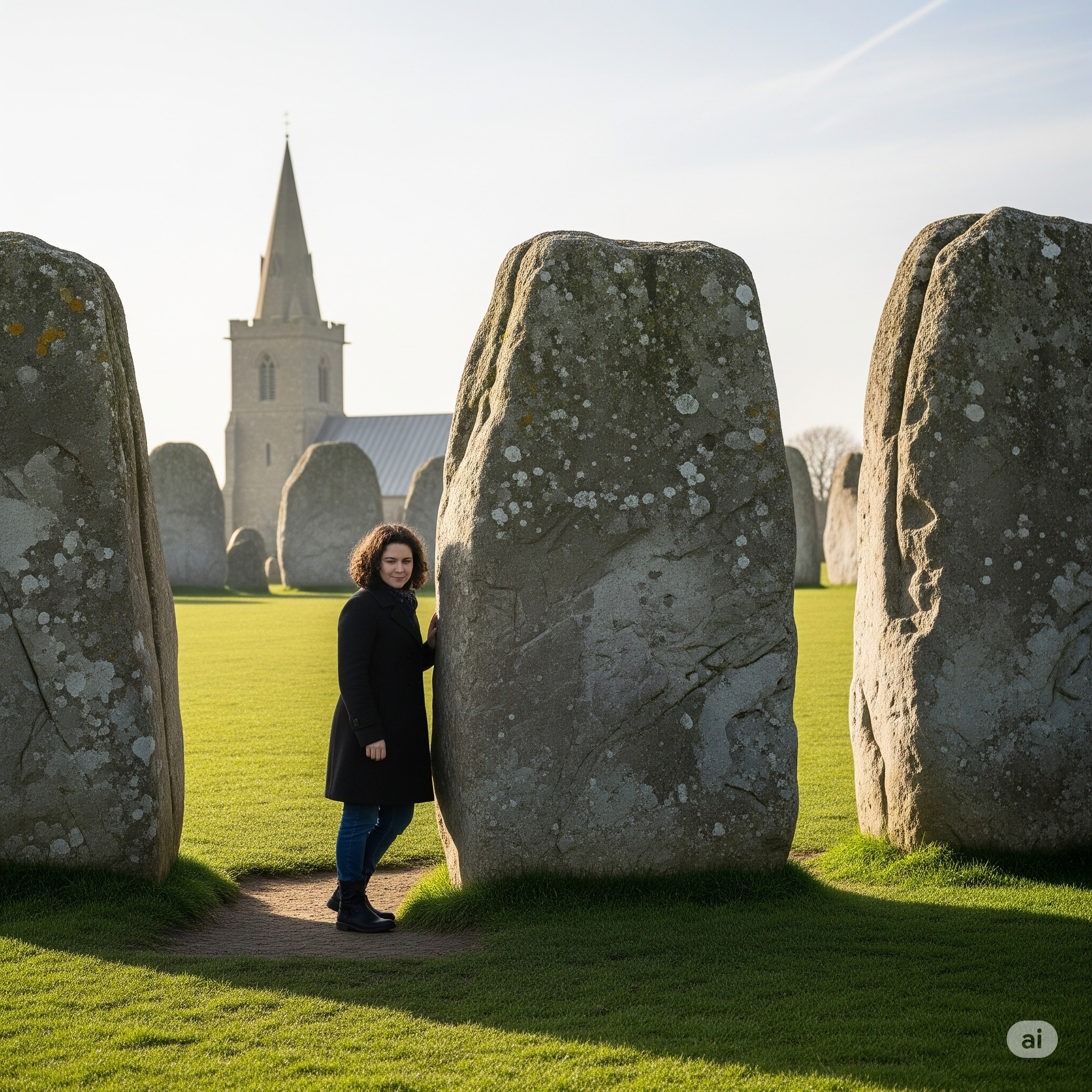
Bath: Roman Waters and Georgian Grandeur
Nestled in the valley of the River Avon, the city of Bath is another UNESCO World Heritage site, celebrated for being two cities in one: an ancient Roman spa complex and a perfectly preserved masterpiece of 18th-century Georgian architecture.
The Roman Baths
The city’s very name comes from the magnificent Roman Baths complex built around Britain’s only naturally occurring hot springs. This is one of the best-preserved Roman religious spas in the world. Walking on the original Roman pavements surrounding the steaming, green waters of the Great Bath is a truly transportive experience. The excellent museum showcases the story of the Roman settlement of Aquae Sulis, its temple dedicated to the goddess Sulis Minerva, and the thousands of Roman artifacts thrown into the sacred spring as offerings.
The Georgian City
In the 18th century, Bath became the most fashionable resort town in England. The city was completely redesigned in a grand, unified style of Neoclassical architecture, using the distinctive, honey-colored “Bath Stone” quarried from the surrounding hills.
- The Royal Crescent: This is the city’s most iconic landmark—a sweeping crescent of 30 grand townhouses that overlooks a verdant park. Its scale and perfect symmetry are a triumph of urban planning.
- The Circus: Designed by John Wood the Elder, this architectural masterpiece consists of three curved segments of townhouses forming a perfect circle, said to mirror the dimensions of Stonehenge.
- Pulteney Bridge: One of only a handful of bridges in the world with shops built into it, Pulteney Bridge is a beautiful Palladian structure that spans the River Avon.
Jane Austen’s World
Bath’s elegant assembly rooms, pump rooms, and grand crescents were the playground of Georgian high society, a world immortalized by one of its most famous residents, Jane Austen. The city provides the primary setting for two of her novels, Persuasion and Northanger Abbey. Visiting Bath is like stepping directly into the pages of her books.
The Dreaming Spires and Honeyed Stone
From the elegance of Bath, we travel north into a landscape of scholarly prestige and idyllic rural charm, exploring the world-famous university city of Oxford and the quintessentially English countryside of the Cotswolds.
Oxford: An Academic Wonderland
Home to the oldest university in the English-speaking world, Oxford is a city that radiates history and intellect. It is not a campus university; instead, the city is the university, with its 38 independent colleges woven into the fabric of the downtown streets. The city’s skyline is a romantic panorama of towers and spires, earning it the nickname “the city of dreaming spires.”
Exploring the Colleges
The heart of the Oxford experience is stepping through a small wooden door in a stone wall and discovering the stunning, cloistered world of a college quad. Many colleges are open to visitors for a small fee.
- Christ Church: The grandest and most famous of the colleges. Its magnificent dining hall was the direct inspiration for the Great Hall in the Harry Potter films, and its chapel doubles as the city’s cathedral.
- Magdalen College (pronounced ‘Maud-lin’): Often considered one of the most beautiful, with a deer park, extensive grounds, and the beautiful River Cherwell running alongside, where you can try your hand at…
Libraries and Landmarks
- The Bodleian Library: One of the oldest and most important libraries in Europe. While access to the reading rooms is restricted, tours take you into its historic heart, including the stunning 15th-century Duke Humfrey’s Library.
- The Radcliffe Camera: This beautiful circular, domed building is the city’s most iconic landmark and a functioning reading room of the Bodleian.
- Punting on the River: A quintessential Oxford pastime. Rent a punt (a flat-bottomed boat propelled by a long pole) and gently glide along the River Cherwell for a relaxing and beautiful view of the “backs” of the colleges.
The Cotswolds: England’s Idyllic Countryside
Stretching across several counties, the Cotswolds is a designated Area of Outstanding Natural Beauty (AONB) and is exactly what many people imagine when they think of the English countryside. It’s a landscape of gentle, rolling hills (“wolds”), dry-stone walls, and impossibly charming villages built from the local honey-colored Jurassic limestone.
The Famous Villages (and Quieter Alternatives)
The Cotswolds are filled with beautiful villages, but some have become victims of their own popularity.
- Bourton-on-the-Water: Often called the “Venice of the Cotswolds” due to the low stone bridges that cross the shallow, sparkling River Windrush running through its center. It is beautiful but can be extremely crowded.
- Bibury: Home to Arlington Row, a picturesque lane of 17th-century weavers’ cottages that is one of the most photographed scenes in England.
- Lesser-Known Gems: To escape the crowds and find a more authentic experience, venture to quieter villages like Stanton or Painswick (known as the “Queen of the Cotswolds”), or take a gentle stroll between the beautiful twin villages of Upper and Lower Slaughter.
The true joy of the Cotswolds lies not just in its villages, but in the journey between them—driving down narrow country lanes, stopping for a walk across a sheep-filled meadow, and ending the day with a pint of local ale by a roaring fire in a historic pub.

Now, we leave this serene interior behind and head southwest, to the very edge of the map. Our journey takes us to the peninsula where England meets the full force of the Atlantic Ocean—a region of dramatic cliffs, wild moorland, and a fierce, independent spirit. This is a land of Celtic myths, artistic light, and a coastline so ancient it’s known as the Jurassic Coast. Welcome to the wild Southwest.
Cornwall (Kernow): A Land of Myth, Art, and the Sea
Cornwall is not just another English county; it feels like another country entirely. Jutting out into the Atlantic, it is a place defined by the sea, with over 300 miles of stunning and varied coastline. Its rugged beauty and unique cultural identity have made it a haven for artists, dreamers, and adventurers.
A Kingdom Apart: The Celtic Spirit
To understand Cornwall, one must first recognize its distinct Celtic heritage. The Cornish people are a recognized national minority in the UK, with roots that connect them more closely to the people of Wales, Brittany, and Ireland than to Anglo-Saxon England. This is reflected in their own flag (the white cross of St Piran), their own language (the revived Cornish language, Kernewek), and a wealth of unique place names and local folklore. This Celtic spirit gives Cornwall a slightly wild, mystical, and fiercely independent character.
The Artist’s Haven: St Ives and its Legendary Light
Nestled on the north coast, the fishing town of St Ives is one of the jewels of Cornwall. A maze of cobbled streets, traditional fishermen’s cottages, and golden sandy beaches, it has been a magnet for artists for more than a century. They are drawn here by the town’s undeniable beauty and, most importantly, by the unique quality of its light. Surrounded by the sea on three sides, the light in St Ives has a special, luminous clarity that has inspired generations of painters and sculptors.
- Tate St Ives: This magnificent gallery, part of the same family as London’s Tate Modern, is the heart of the town’s art scene. Its striking white, circular building overlooks the windswept Porthmeor Beach and showcases the work of modern British artists with links to the area.
- Barbara Hepworth Museum and Sculpture Garden: A visit to the former home and studio of Dame Barbara Hepworth, one of the 20th century’s most important sculptors, is a truly magical experience. You can see her workshops as she left them and, most wonderfully, wander through the lush, secluded garden where her magnificent bronze sculptures are displayed amongst subtropical plants.

The Penwith Peninsula: Dramatic Cliffs and Ancient Mysteries
The far western tip of Cornwall, the Penwith Peninsula, is where the landscape becomes its most raw and dramatic.
- Land’s End: The westernmost point of mainland England, this is a place of dramatic, granite cliffs plunging into the churning sea. While the visitor complex can be commercial, a short walk along the coastal path in either direction will reward you with stunning, wild scenery.
- The Minack Theatre (A Lesser-Known Wonder): This is one of the most spectacular and improbable theatres in the world. The Minack is a breathtaking open-air amphitheater carved into the side of a granite cliff, with the sea as its magnificent, ever-changing backdrop. It was the life’s work of one visionary woman, Rowena Cade, who, starting in the 1930s, built it largely by hand. To watch a play here, with the sound of the waves below and seabirds overhead, is an unforgettable experience. Book tickets far in advance.
- Ancient Sites: This small peninsula is densely packed with prehistoric remains, from the Neolithic burial chamber of Lanyon Quoit to the Bronze Age stone circle of the Merry Maidens, adding to the region’s mystical atmosphere.
Legends and Landscapes: Tintagel Castle
On Cornwall’s north coast, the ruins of Tintagel Castle are inextricably linked with the legend of King Arthur. The setting is pure drama: the medieval castle ruins are perched on a rugged, windswept headland, now reconnected to the mainland by a spectacular modern footbridge that spans the chasm between them. While historians debate the Arthurian connection, there is no denying the magic of the place. As you explore the ruins and gaze out at the crashing waves, it’s easy to see why centuries of myths and legends have been born here.
Devon and the Jurassic Coast: A Journey Through Geological Time
Moving east from Cornwall, we enter the county of Devon and the beginning of a coastline so significant it has been designated as England’s first natural World Heritage Site.
The English Riviera and Wild Moors of Devon
Devon offers a landscape of two distinct characters. Its south coast, known as the English Riviera, is home to traditional seaside resorts like Torquay, known for their mild microclimate and Victorian charm. Inland, however, lies the wild and brooding expanse of Dartmoor National Park. This high moorland is a landscape of stark beauty, characterized by its boggy terrain, herds of wild ponies, and dramatic granite outcrops known as “tors.” Its misty, atmospheric landscape famously inspired Sir Arthur Conan Doyle’s Sherlock Holmes novel, The Hound of the Baskervilles.
The Jurassic Coast: England’s First Natural World Heritage Site
Stretching for 95 miles from East Devon to Dorset, the Jurassic Coast is a walk through time. Its cliffs are being constantly eroded by the sea, revealing a continuous, 185-million-year record of the Earth’s history, through the Triassic, Jurassic, and Cretaceous periods. It is one of the most important sites for fossils in the world.
Fossil Hunting in Lyme Regis
The charming seaside town of Lyme Regis in Dorset is the heart of the Jurassic Coast and the birthplace of modern paleontology. It was here that a young woman named Mary Anning made a series of spectacular fossil discoveries in the early 19th century, including the first complete Ichthyosaur and Plesiosaur skeletons. The amazing thing is that you can follow in her footsteps. After a storm, a walk along the beaches of Lyme Regis or nearby Charmouth will often reveal countless small fossils, such as ammonites (spiral-shaped shells) and belemnites (bullet-shaped fossils), that you can pick up and keep. It is a thrillingly direct connection to a prehistoric world.
Iconic Natural Landmarks
The erosion that reveals fossils has also created some of England’s most stunning natural landmarks.
- Durdle Door: This magnificent natural limestone arch is one of the most photographed sights in the country. The arch frames a beautiful shingle beach and stands as a perfect, majestic gateway to the turquoise sea.
- Lulworth Cove: Just a short walk from Durdle Door is this idyllic, near-perfect circular cove. Its beautiful shape was formed by the sea breaking through a band of hard Portland limestone and then rapidly eroding the softer clays behind it.
The Jurassic Coast is a powerful reminder of the immense timescale of our planet, where every cliff and every pebble tells a story millions of years in the making.
Now, our compass turns decisively north. We venture into a region with a profoundly different character—a land forged in the fires of the Industrial Revolution, whose cities gave birth to world-changing music and whose vast, open landscapes have inspired a different kind of romance: one of rugged beauty, brooding moors, and soul-stirring vistas. This is a journey into the industrial and natural heartlands of the North of England.
The Northern Powerhouses: A Tale of Two Cities
The story of the modern world was written in the red-brick mills and warehouses of England’s northern cities. While their industrial past is a source of immense pride, today Manchester and Liverpool have reinvented themselves as vibrant, forward-thinking centers of culture, music, and sport.
Manchester: The Original Modern City
Manchester is a city of swagger and innovation. As the world’s first industrial city—the original “Cottonopolis”—it has a long history of being at the forefront of change. That legacy continues today, not in cotton mills, but in its world-famous music scene, thriving creative industries, and proud, independent spirit.
A Musical Pilgrimage
For decades, Manchester has been a crucible of British music. Its sound has consistently defined and defied genres. A visit to the city is a chance to walk through music history, tracing the roots of iconic bands like The Smiths, Joy Division, The Stone Roses, and Oasis. Explore the Northern Quarter, the city’s creative heart, with its independent record stores, gritty street art, and bohemian cafes. While the legendary Haçienda nightclub is long gone, its spirit of musical innovation lives on in the city’s countless live music venues.
Industrial Roots, Creative Future
The best way to experience Manchester is to explore its regenerated industrial neighborhoods. Wander through the canals of Castlefield, where Roman ruins sit alongside converted Victorian warehouses. Discover Ancoats, once the world’s first industrial suburb, now a hip neighborhood famed for its independent restaurants and craft breweries. The city wears its industrial heritage as a badge of honor, repurposing it into a stage for modern creativity. Beyond music, Manchester is also home to the National Football Museum, a must-visit for any soccer fan.

Liverpool: A Maritime Soul with a Global Beat
Just an hour away by train, Liverpool offers a different but equally compelling character. This is a port city, its identity shaped by the vast River Mersey and its history as a global maritime hub.
The Waterfront: A Grand Maritime Legacy
Liverpool’s waterfront is one of the most iconic in the world. The “Three Graces”—the Royal Liver Building, the Cunard Building, and the Port of Liverpool Building—are a trio of majestic early 20th-century buildings that stand as a proud testament to the city’s former wealth and global importance. A stroll through the regenerated Royal Albert Dock is a must. Its beautiful red-brick warehouses now house a vibrant mix of museums, galleries, restaurants, and shops. (It’s worth noting for E-E-A-T purposes that the waterfront was a UNESCO World Heritage site until 2021; its delisting is part of its ongoing story of development).
The Beatles: In the Footsteps of Giants
Liverpool is, of course, synonymous with The Beatles, and the city is a living museum for fans of the Fab Four. A pilgrimage here is an essential rite of passage.
- The Cavern Club: Head down the stairs on Mathew Street to the rebuilt club on the site where the band played nearly 300 times, launching their journey to global stardom.
- The Beatles Story: Located at the Royal Albert Dock, this museum offers an immersive journey through the lives and careers of the band.
- Magical Mystery Tour: Take a bus tour to see their childhood homes, the real Penny Lane, and the gates of Strawberry Field.
Liverpool is a city that sings, from its world-changing pop music to the sea shanties of its maritime past.
“God’s Own County”: The Landscapes of Yorkshire
East of the great northern cities lies Yorkshire, England’s largest county and a place of fierce local pride. Its residents lovingly call it “God’s Own County,” and its stunningly diverse landscapes make a compelling case.
The Yorkshire Dales National Park: A Patchwork of Green
The Dales are a landscape of serene, pastoral beauty. The scenery is characterized by its rolling green valleys (the “dales”), carved by rivers and separated by high hills (“fells”). The entire landscape is stitched together by a network of distinctive dry-stone walls, creating a beautiful patchwork effect. Explore charming stone-built villages like Grassington and Reeth, and visit famous dales such as Wensleydale (home of the famous cheese) or the wilder, more remote Swaledale.
The North York Moors National Park: Heather, Coast, and Steam
The North York Moors offer a wilder, more brooding beauty. This is a vast, high plateau covered in a sea of purple heather in late summer.
- A Dramatic Coastline: The moors drop dramatically into the North Sea, creating a stunning coastline dotted with charming, red-roofed fishing villages that cling to the cliffs, such as Staithes and Robin Hood’s Bay. Dominating this coast are the haunting ruins of Whitby Abbey, perched on a headland above the town of Whitby. The abbey’s gothic splendor famously inspired Bram Stoker’s novel, Dracula.
- The North Yorkshire Moors Railway: For a truly magical experience, take a ride on this perfectly preserved heritage steam railway. The route winds its way through the heart of the moors, and its Goathland station famously doubled as “Hogsmeade Station” in the Harry Potter films.
The Lake District: A Landscape of Poets and Painters
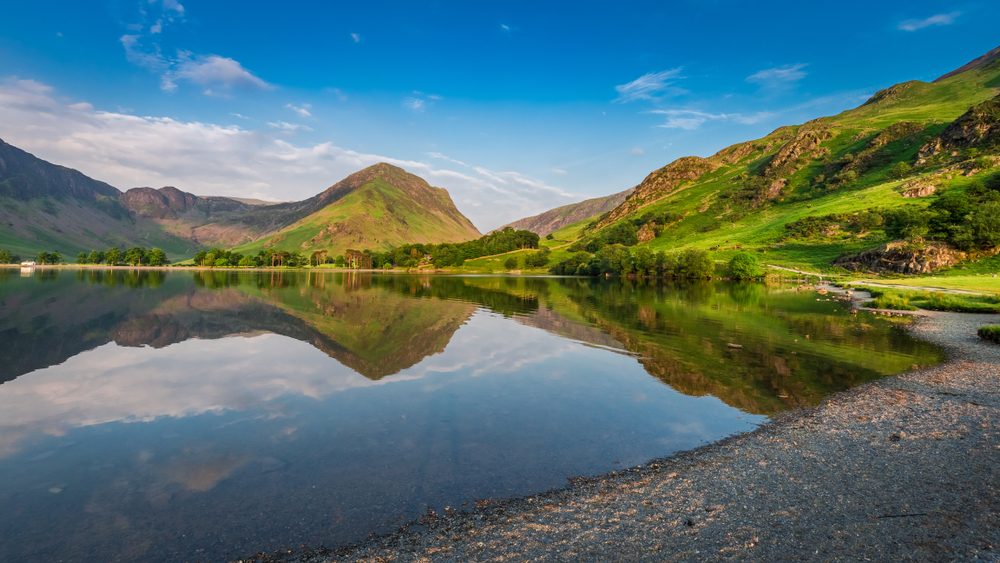
In the northwest corner of England lies the Lake District National Park, a UNESCO World Heritage Site and arguably the country’s most beloved landscape. This is a compact, mountainous region of rugged fells, deep glacial lakes, and breathtaking valleys that has inspired generations of writers and artists.
The Romantic Connection
The Lake District is inextricably linked with the Romantic poets of the early 19th century, most notably William Wordsworth. Wordsworth, who was born here, believed that nature was the ultimate source of spiritual truth and beauty. His poetry transformed the way we see the landscape, popularizing the idea of walking and hiking for pleasure and inspiration. A visit to his homes, Dove Cottage in Grasmere and later Rydal Mount, offers a profound insight into his life and work.
Must-See Lakes and Villages
While the region is home to 16 major lakes, some are particularly iconic.
- Windermere: The largest lake in England, a bustling hub of boating activity.
- Ullswater: Often considered the most beautiful, with its dramatic, Z-shaped course that winds between high fells. It was here that Wordsworth was inspired to write his most famous poem, “I Wandered Lonely as a Cloud.”
- Derwentwater: Known as the “Queen of the Lakes,” it is dotted with beautiful islands and presided over by the charming market town of Keswick.
“Fell Walking”: Getting into the Hills
To truly experience the Lake District, you must leave the car and walk. “Fell walking” (the local term for hill or mountain walking) is a national pastime here. There are walks for every ability, from gentle lakeside strolls to challenging mountain scrambles. An accessible and incredibly rewarding hike is the ascent of Catbells, which offers some of the most spectacular panoramic views in the entire park for relatively modest effort. For the more adventurous, the climb up Scafell Pike, England’s highest peak, is a true challenge.
Northumberland: England’s Last Wilderness
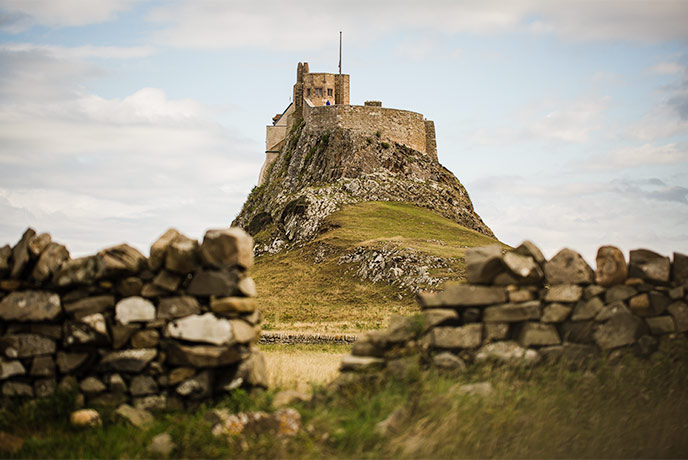
Northumberland is England’s most sparsely populated county. It is a land of vast, empty landscapes, dark skies perfect for stargazing (it is home to an International Dark Sky Park), and a history more turbulent than almost any other region.
A Land of Castles and Conflict
Northumberland has more castles than any other county in England, a direct result of its violent history as the battleground between England and Scotland for centuries. This was the land of the Border Reivers, lawless clans who raided and fought across the border from the 13th to the 17th century. The castles here were not fairytale palaces; they were grim, functional fortresses built for war. The most magnificent of these is Bamburgh Castle, an enormous and imposing fortress perched dramatically on a volcanic dolerite crag, dominating the coastline for miles. Its silhouette against the North Sea is one of the most powerful and epic sights in the country.
Hadrian’s Wall: Walking the Roman Frontier
Stretching for 73 miles (117 km) from coast to coast across the narrowest part of northern England, Hadrian’s Wall is the most significant and ambitious monument built by the Romans in Britain. Now a UNESCO World Heritage Site, it represents the northwestern edge of what was once the largest empire the world had ever seen.
The Edge of the Roman World
Built under the orders of Emperor Hadrian around AD 122, the wall was far more than a simple barrier. It was a heavily fortified, militarized border control system, complete with forts, milecastles (small forts spaced one Roman mile apart), turrets, and a massive ditch. It was a stark and undeniable statement of Roman power, marking the line between the “civilized” Roman world and the “barbarian” lands of Caledonia (modern Scotland) to the north.
Experiencing the Wall Today
The best way to experience the wall’s majesty is to visit its central section in Northumberland National Park, where the terrain is most dramatic and the structure is best preserved.
Housesteads Roman Fort
Perched high on a dramatic escarpment known as the Whin Sill, Housesteads is the most complete Roman fort in Britain. Walking among the stone foundations of the barracks, the commander’s house, the hospital, and the famously well-preserved communal latrines offers an incredible insight into military life on the frontier. The panoramic views from the fort, looking out over the wild landscape with the wall snaking away in either direction, are simply breathtaking.
Vindolanda (The Insider’s Gem)
Just south of the wall lies the fort and settlement of Vindolanda, an active archaeological site and home to a world-class museum. While Housesteads offers the views, Vindolanda offers the human connection. It is famous for the Vindolanda Tablets, thin, postcard-sized wooden leaf-tablets that were preserved in the site’s oxygen-free soil. These tablets contain personal correspondence to and from the soldiers and their families stationed here nearly 2,000 years ago—a soldier writing home to ask for more socks, a birthday party invitation, a commander’s wife inquiring about social plans. They are the oldest surviving handwritten documents in Britain and provide a poignant and deeply personal glimpse into daily life on the Roman frontier.
To truly connect with this landscape, one must walk. The Hadrian’s Wall Path National Trail follows the wall’s route, and hiking even a small section of it, particularly along the high ridges of the Whin Sill, is to literally walk in the footsteps of Roman legionaries.
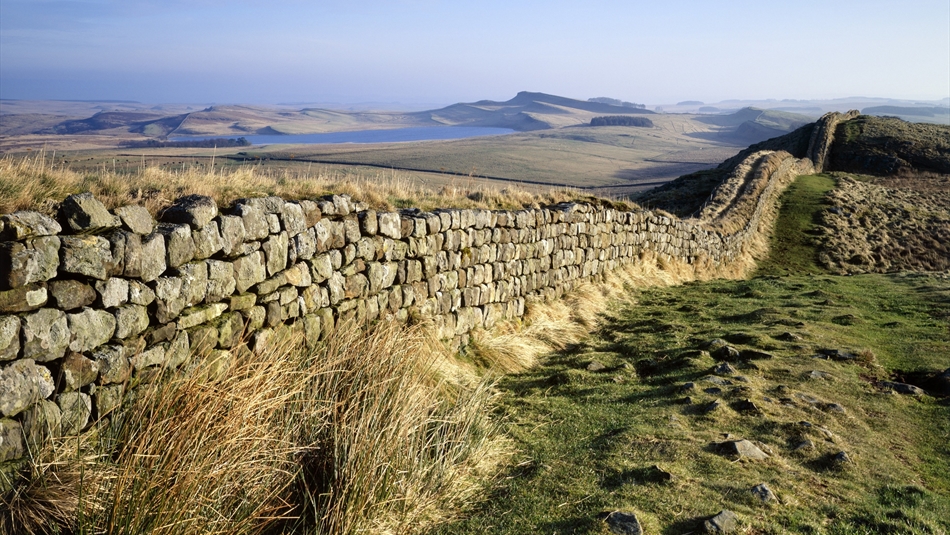
The Holy Island of Lindisfarne: A Tidal Treasure
Our final destination is one of the most mystical and unique places in England. Lindisfarne, often simply called Holy Island, is a small island off the Northumberland coast with a history of immense significance.
The Tidal Crossing: An Adventure in Itself
What makes Lindisfarne unique is that it is a tidal island. It is connected to the mainland by a paved causeway that disappears underwater twice a day at high tide, completely cutting the island off. This is not a suggestion; it is a rule of nature. You MUST check the tide times and the official safe crossing times before you visit. To be caught by the incoming tide is extremely dangerous. The act of planning your visit around the rhythm of the sea and making the crossing while the road is clear is an adventure in itself.
The Cradle of English Christianity
In AD 635, the Irish monk St. Aidan founded a monastery on Lindisfarne, which became a major center of Celtic Christianity. It was from this remote outpost that much of northern England was converted. The monastery became a great center of learning and art, and it was here, in the early 8th century, that monks created the Lindisfarne Gospels, one of the world’s most beautiful and intricate masterpieces of medieval manuscript illumination. The island’s peaceful history was shattered in AD 793 by the first major Viking raid on England, an event that sent shockwaves through Christian Europe and marked the beginning of the Viking Age.
Today, visitors can explore the serene ruins of the later Lindisfarne Priory and soak in the palpable sense of peace and history. Perched on a high volcanic plug at the other end of the island is the dramatic Lindisfarne Castle, a 16th-century fort that was converted into a romantic Edwardian holiday home in the early 20th century.
An Explorer’s Epilogue: The Enduring Tapestry of England
Our grand tour has come to an end. We began in the relentless, forward-moving pulse of London, a world in one city. We journeyed through the ancient and scholarly heart of the South, where prehistoric stones and university spires tell tales of deep time and intellectual ambition. We ventured to the wild, Celtic-tinged coasts of the Southwest, a land of myth, art, and geological wonder. We headed north to the proud post-industrial cities and the vast, romantic landscapes of Yorkshire and the Lake District. And finally, we stood on the very edge of an ancient empire, on a windswept wall and a sacred tidal island.
If this journey has shown anything, it is that England is not one single story, but a magnificent and enduring tapestry woven from a thousand different threads. It is a country of profound contrasts: of bustling cities and empty wilderness, of refined elegance and rugged industry, of ancient faiths and modern creativity.
Perhaps England’s greatest treasure is the sheer density of its history and the way the past is never truly past. It is always present—in the shape of a field, the name of a pub, the stones of a church wall, or a path worn into a hillside by Roman legionaries. For the curious explorer, the traveler who wishes to look beyond the postcards, the journey through England is never truly over; there is always another layer of the tapestry to uncover.









